การทำความสะอาดกระเบื้อง
กระเบื้องเป็นหนึ่งในวัสดุปูพื้นที่ได้รับความนิยมมากที่สุด และด้วยเหตุผลที่ดี: กระเบื้องมีความทนทานและส่วนใหญ่ดูแลง่าย อย่างไรก็ตาม มีจุดที่ต้องพิจารณาเมื่อทำความสะอาด
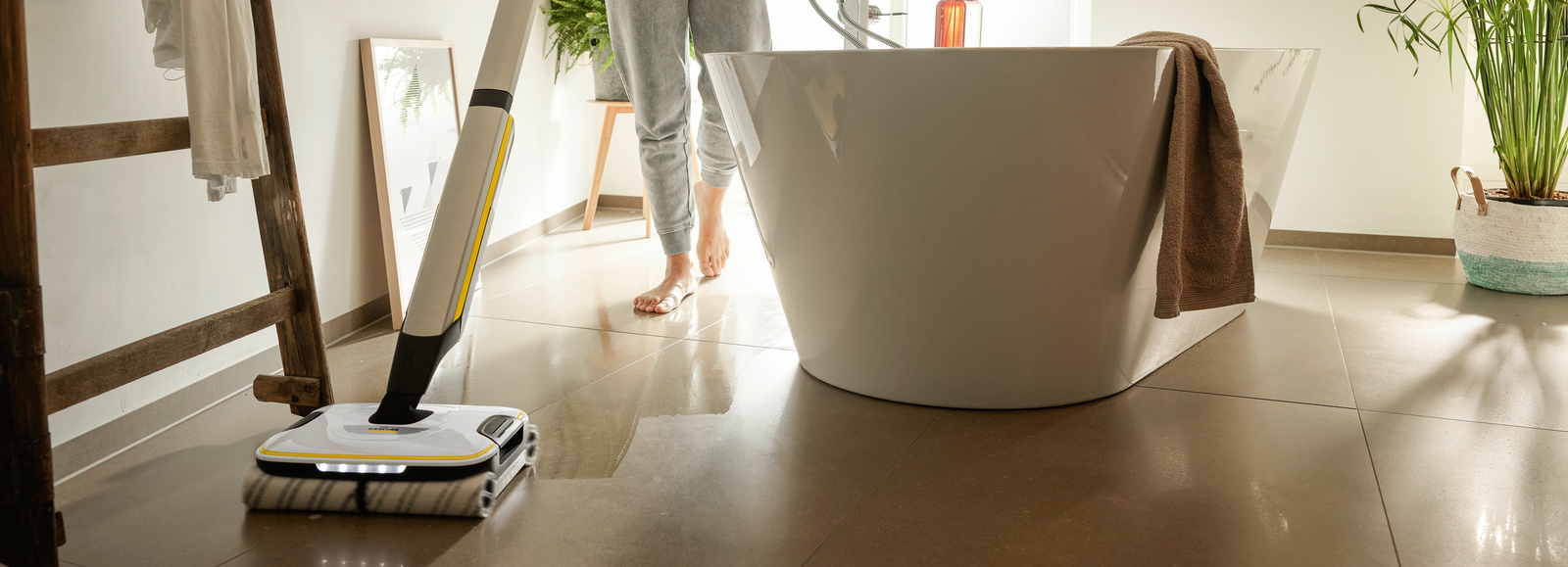
การทำความสะอาดกระเบื้องประเภทต่าง ๆ อย่างถูกวิธี
กระเบื้องมีมากมายหลายชนิด ในการทำความสะอาดด้วยวิธีที่มีประสิทธิภาพสูงสุด สิ่งสำคัญคือต้องระบุวัสดุของกระเบื้องให้ถูกต้องก่อน ประเภทที่พบมากที่สุด คือ กระเบื้องเซรามิก เช่น กระเบื้องสโตนแวร์เนื้อดี กระเบื้องเคลือบ กระเบื้องสโตนแวร์ กระเบื้องดินเผา และกระเบื้องปูนเม็ด ส่วนประกอบพื้นฐานของกระเบื้องที่มีจำหน่ายในท้องตลาดทั้งหมดคือดินเหนียว ซึ่งขึ้นอยู่กับประเภท ประกอบด้วยมวลรวมที่แตกต่างกันและเผาที่อุณหภูมิต่างกัน อย่างไรก็ตาม บางครั้งคุณยังพบกระเบื้องหินธรรมชาติและหินเทียมในครัวเรือน และนี่คือจุดที่คุณต้องดูแลเป็นพิเศษในการทำความสะอาด
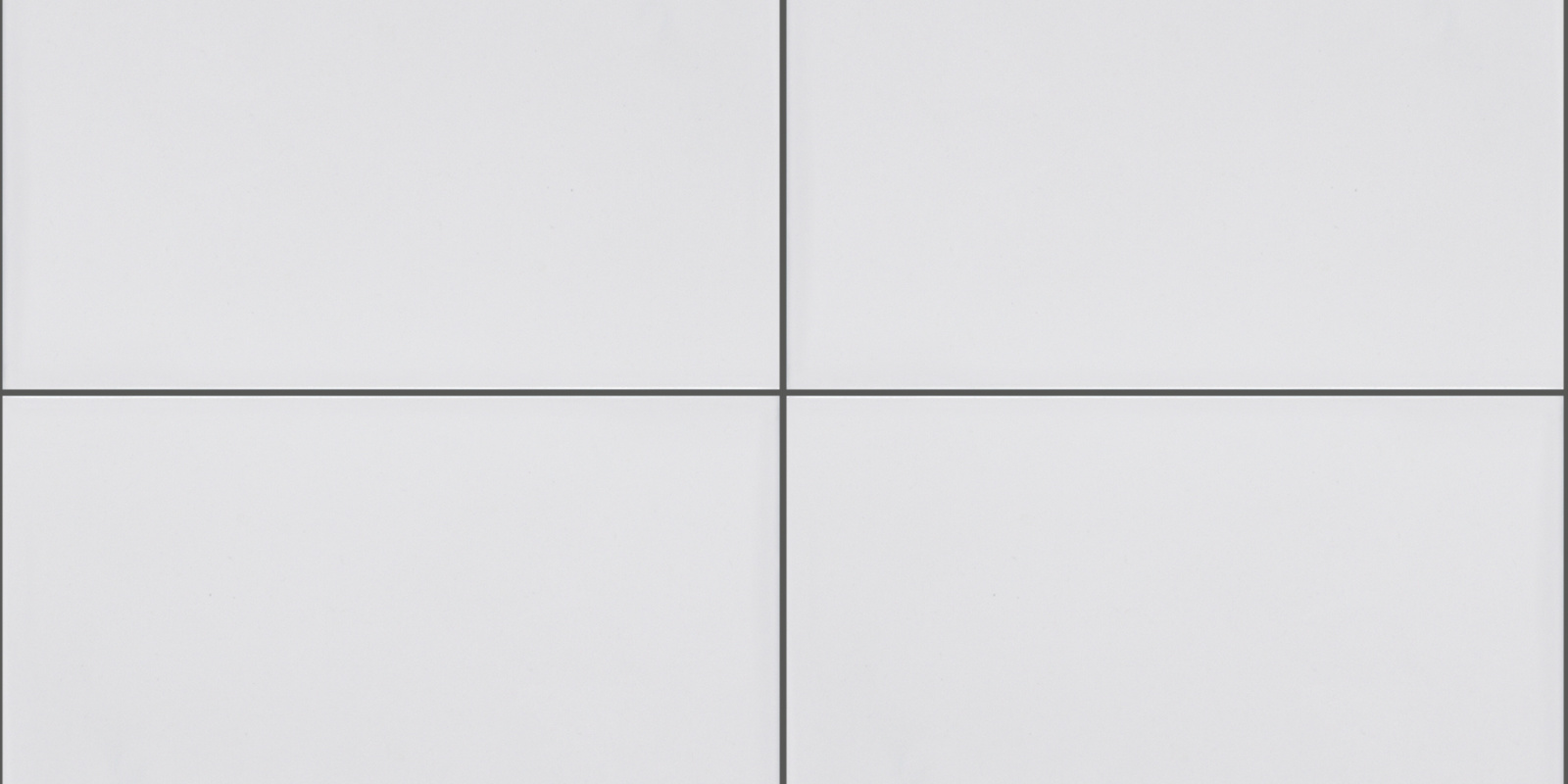
กระเบื้องเคลือบ (Glazed tiles)
โดยทั่วไปเข้าใจว่ากระเบื้องเคลือบหมายถึงกระเบื้องสโตนแวร์ที่มีการเคลือบคล้ายแก้วไว้ที่ชั้นบนสุด สิ่งนี้ทำให้ได้พื้นผิวที่เรียบและปิดสนิท และมีโครงสร้างและสีให้เลือกมากมาย กระเบื้องเคลือบมีลักษณะเป็นขอบและชั้นบนสุดที่มีสีต่างกัน ด้วยพื้นผิวที่เรียบ กระเบื้องเคลือบมักจะทำความสะอาดได้ง่ายและไม่ต้องการการดูแลเป็นพิเศษ
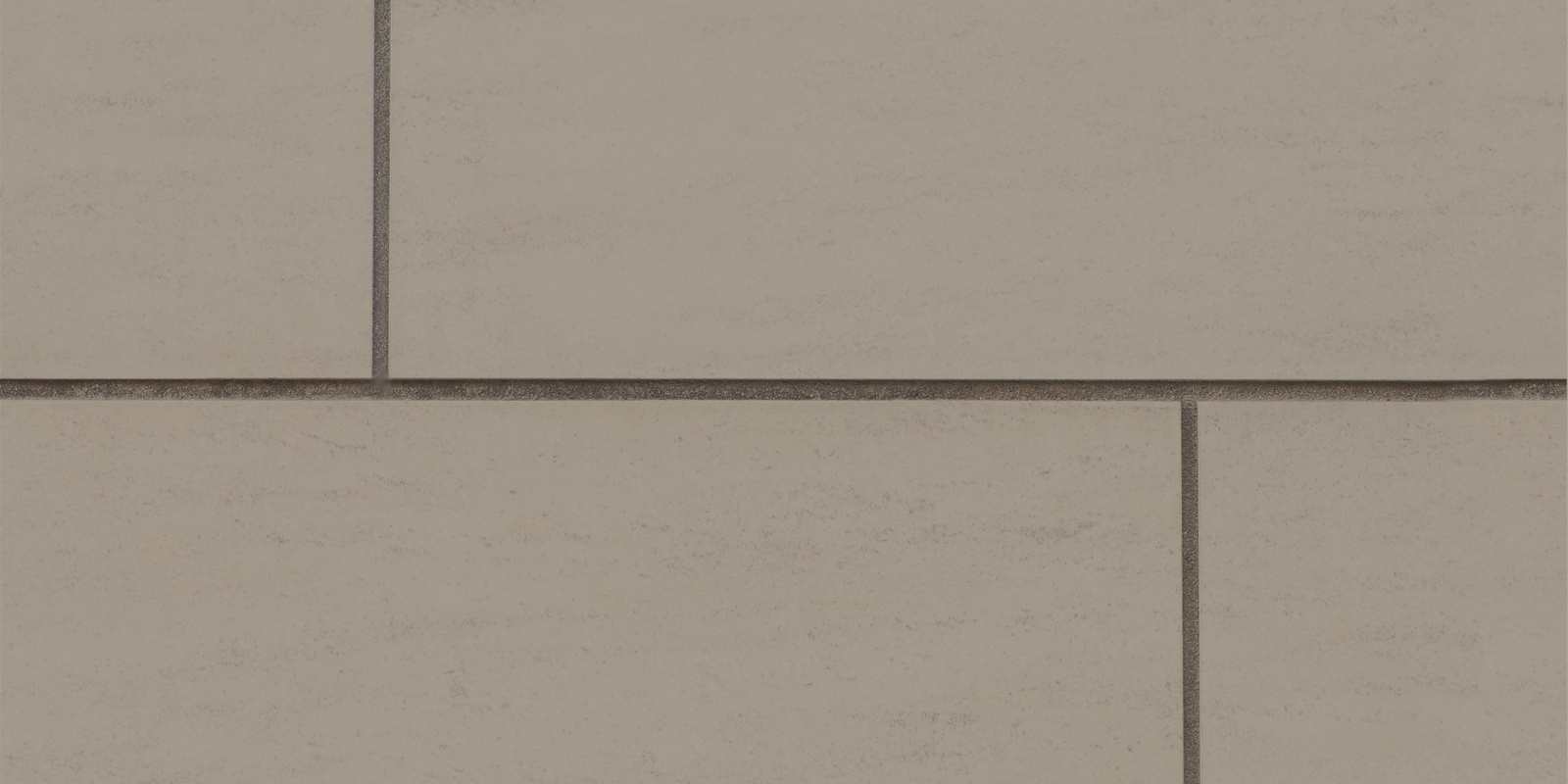
กระเบื้องสโตนแวร์ (Stoneware tiles)
ด้วยความแข็งแรงและรูปลักษณ์ที่สวยงาม กระเบื้องหินจึงถูกนำมาใช้ในพื้นที่อยู่อาศัยมากขึ้นเรื่อยๆ กระเบื้องหินเนื้อดีมีให้เลือกทั้งแบบผิวด้าน, ผิวเงา, มีลาย (เช่น ลายหินชนวน) หรือพิมพ์ลาย (เช่น ลายไม้) ซึ่งโดยปกติแล้วกระเบื้องหินจะมีสีเดียวและมีลักษณะที่เหมือนกันในทุกด้าน ยกเว้นกระเบื้องหินเนื้อดีที่พิมพ์ลายซึ่งมีลักษณะเฉพาะที่แตกต่างออกไป
กระเบื้องหินมีพื้นผิวไมโครพอรัส ดังนั้นจึงควรทำความสะอาดด้วยผ้าไมโครไฟเบอร์ ซึ่งเส้นใยละเอียดสามารถเข้าถึงพื้นที่เล็กๆ ที่ไม่เรียบของพื้นผิวได้ ส่วนวิธีการทำความสะอาดจะเหมือนกับกระเบื้องเคลือบทั่วไป สำหรับกระเบื้องหินเนื้อดีที่มีลาย เราขอแนะนำให้เช็ดไปในทิศทางยาวและขวางข้ามพื้นผิวหนึ่งครั้ง เพื่อให้ได้ผลลัพธ์การทำความสะอาดที่ยอดเยี่ยมลึกเข้าไปในลายของพื้นผิว ซึ่งโดยทั่วไปแล้ว ส่วนใหญ่กระเบื้องหินจะทนต่อด่างและกรด และทนต่อสารทำละลายอินทรีย์ โดยไม่จำเป็นต้องดูแลเพิ่มเติมนอกเหนือจากการทำความสะอาดที่ถูกต้อง
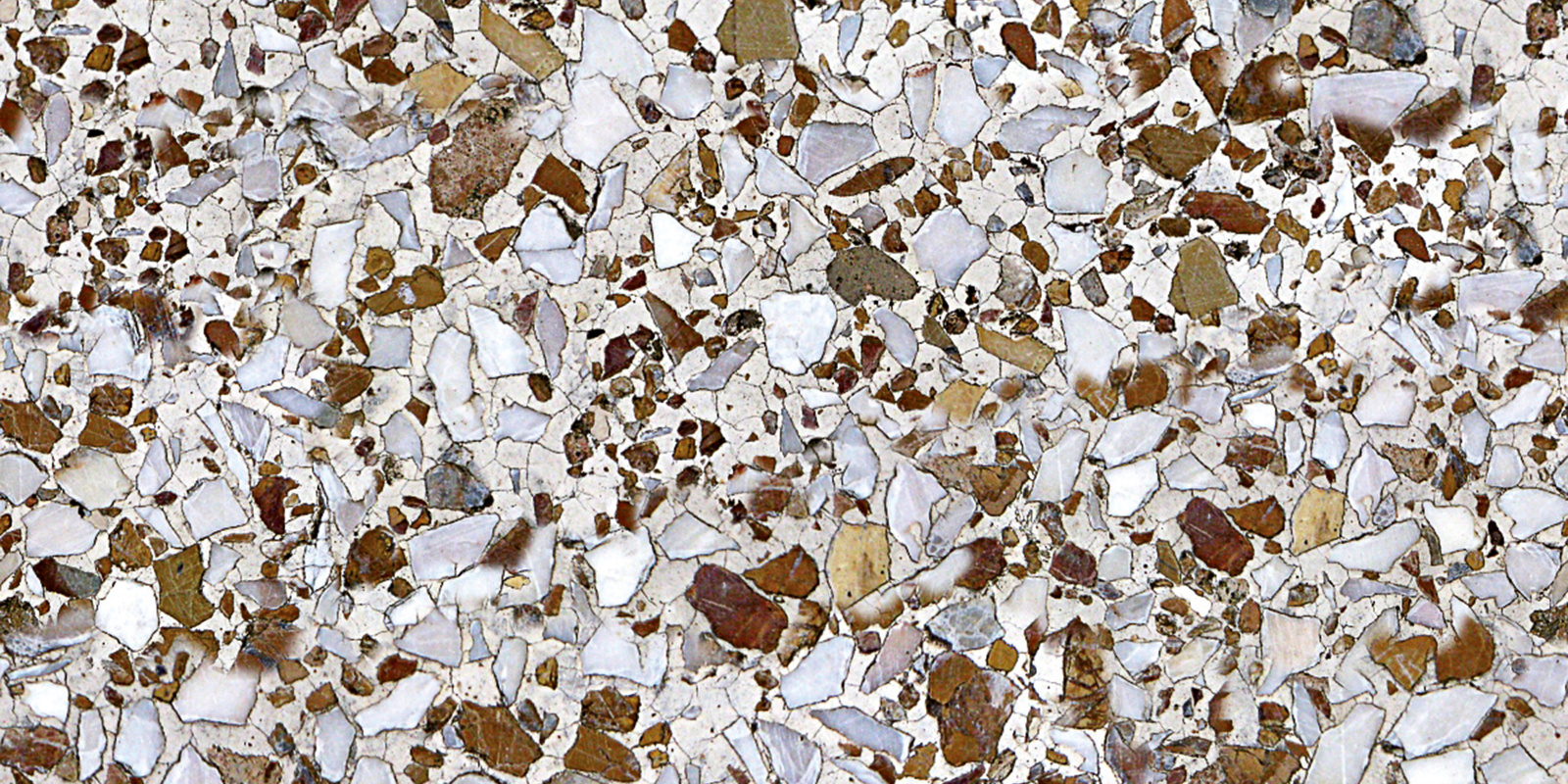
กระเบื้องหินธรรมชาติและหินสังเคราะห์ (Natural and artificial stone tiles)
หินธรรมชาติประกอบด้วย เช่น แกรนิต, หินอ่อน, หินจูราสสิก และหินชนวน ส่วนหินสังเคราะห์ประกอบด้วยวัสดุที่มีส่วนผสมของแร่ธาตุ (มักจะเป็นซีเมนต์) หรือเรซินที่ผลิตจากการใช้กรวดต่างๆ เช่น ทราย, กรวด, หินอ่อน หรือวัสดุอื่นๆ โดยประเภทของหินสังเคราะห์ที่ใช้บ่อย ได้แก่ หินเทียม, คอนกรีตหินทรายเปลือย, หรือหินอ่อนอัดก้อน
ผลิตภัณฑ์ทำความสะอาดที่เป็นกรด (ค่า Ph < 7) หรือของใช้ทำความสะอาดที่มีในครัวเรือน เช่น น้ำส้มสายชูหรือกรดซิตริก จะใช้สำหรับคราบสกปรกจากแร่ เช่น สนิม, คราบปูน หรือคราบซีเมนต์ เนื่องจากหินธรรมชาติและหินสังเคราะห์หลายชนิดไวต่อกรด เราขอแนะนำให้ทำการทดสอบในบริเวณที่ไม่เด่นชัดก่อน โดยให้หยดผลิตภัณฑ์ทำความสะอาดที่เป็นกรดลงบนพื้นผิวในพื้นที่ที่สังเกตได้ยาก หากเริ่มเกิดฟอง แสดงว่าหินนั้นไวต่อกรดและไม่ควรใช้ผลิตภัณฑ์ทำความสะอาดที่เป็นกรด

2 ขั้นตอน ทำความสะอาดกระเบื้องง่ายๆ
วิธีการทำความสะอาดที่ได้รับความนิยมมากที่สุดคือการใช้การดูดฝุ่นร่วมกับการเช็ดเปียก ในขั้นตอนแรกของการทำงาน จะใช้เครื่องดูดฝุ่นทั่วไปเก็บสิ่งสกปรกที่เห็นได้ชัดออกก่อน เช่น ฝุ่นและเส้นผม หากกระเบื้องพื้นตั้งอยู่นอกบ้านหรือในพื้นที่สกปรกมาก เช่น โรงรถ เครื่องดูดฝุ่นเอนกประสงค์จะเหมาะสมที่สุด
จากนั้นเช็ดพื้นผิวด้วยผ้าเช็ดทำความสะอาดหรือไม้ถูพื้น โดยควรบีบผ้าเช็ดให้แห้งอย่างสม่ำเสมอด้วยเครื่องบีบผ้า เพื่อป้องกันการสัมผัสกับสิ่งสกปรกโดยตรงให้มากที่สุด ในขั้นแรก ควรเริ่มทำความสะอาดจากขอบของห้องทั้งหมด แล้วจึงทำงานจากมุมที่อยู่ไกลที่สุดไปยังประตู โดยใช้การเคลื่อนไหวอย่างสม่ำเสมอ
ด้วยการฝึกฝนเล็กน้อย วิธีการทำความสะอาดนี้สามารถช่วยให้ทำความสะอาดได้อย่างรวดเร็ว แต่อย่างไรก็ตาม กระบวนการนี้ก็มีข้อเสียบางประการ: สิ่งสกปรกที่ฝังแน่นต้องได้รับการทำความสะอาดเพิ่มเติมเพื่อให้หลุดออก โดยเฉพาะคราบแห้งในครัวมักจะไม่หลุดออกในครั้งแรก ส่วนใหญ่แล้วไม้ถูพื้นจะใช้น้ำในปริมาณที่ค่อนข้างมาก ทำให้พื้นผิวต้องใช้เวลานานกว่าจะแห้ง
การกำจัดคราบสีเทาบนกระเบื้อง
หากพื้นกระเบื้องได้รับการดูแลไม่ถูกต้องเป็นระยะเวลานาน เช่น ใช้ผลิตภัณฑ์ทำความสะอาดหรือการดูแลที่มากเกินไป อาจทำให้เกิดคราบสีเทาขึ้นได้ ซึ่งจะทำให้เกิดชั้นของสิ่งสกปรกและสารเคมีที่สะสม และเมื่อเวลาผ่านไปจะทำให้พื้นผิวดูไม่สวยงาม เพื่อกำจัดคราบนี้ รอบการทำความสะอาดแรกควรใช้เพียงน้ำอุ่นเท่านั้น หากมีฟองเกิดขึ้นในน้ำสกปรกระหว่างกระบวนการทำความสะอาด นี่เป็นสัญญาณที่ดีว่าคราบสารเคมีเก่าได้ถูกขจัดออกไปแล้ว โดยในกรณีนี้ให้ทำซ้ำกระบวนการจนไม่มีฟองเกิดขึ้นอีก นอกจากนี้ ฟองน้ำเมลามีนหรือที่รู้จักกันว่า ฟองน้ำวิเศษ ก็เป็นตัวเลือกที่ดีสำหรับการกำจัดคราบนี้เช่นเดียวกัน
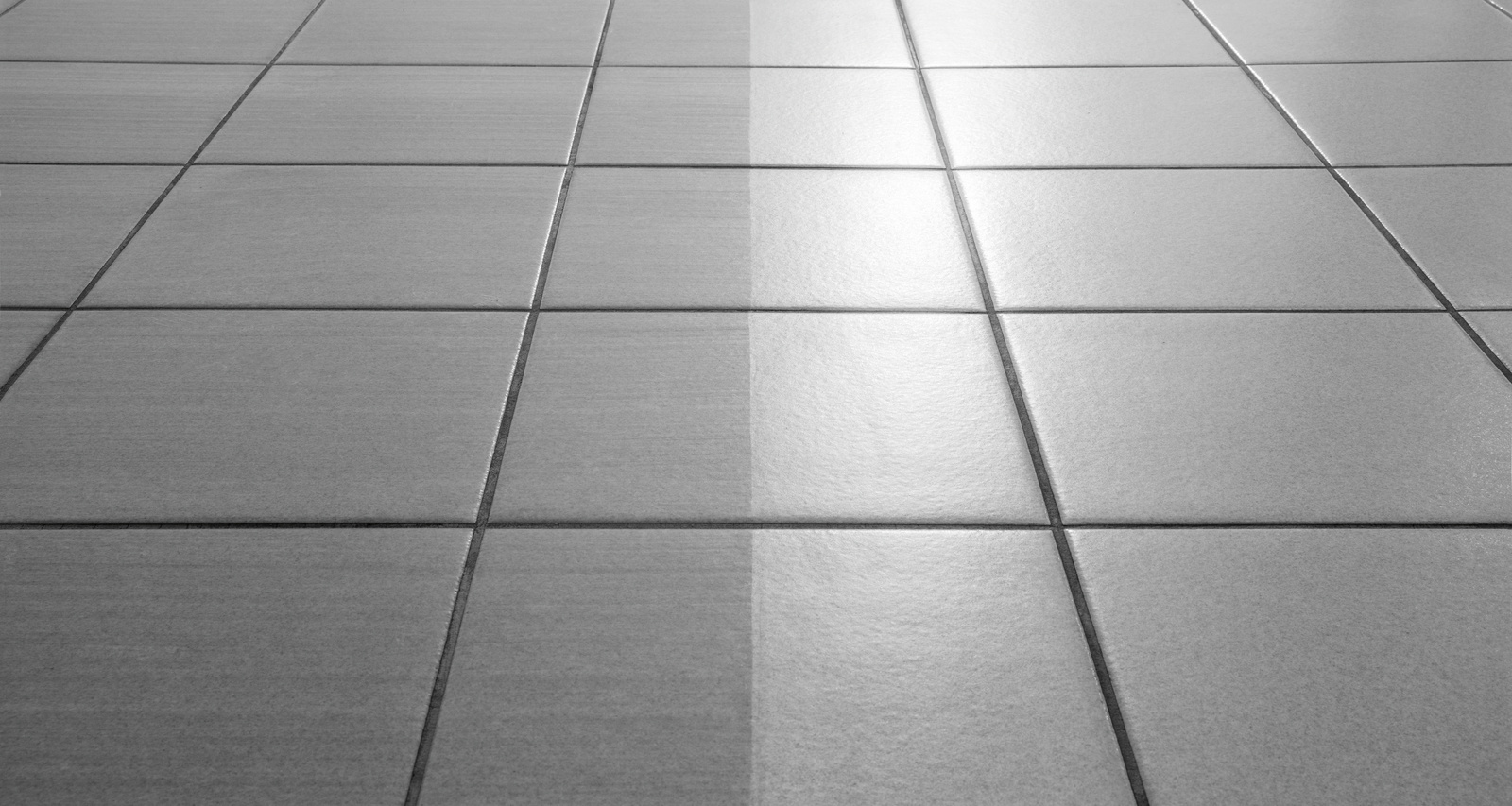
เคล็ดลับจากผู้เชี่ยวชาญ
ไม่ว่าจะมีคราบสีเทาเกิดขึ้นหรือไม่ก็ตาม เราขอแนะนำให้เริ่มทำความสะอาดในพื้นที่เล็กๆ ที่ไม่เด่นชัดก่อน และหลังจากพื้นแห้งแล้ว ให้สังเกตความแตกต่างกับพื้นผิวที่ยังไม่ได้ทำความสะอาด หากทราบยี่ห้อของพื้น ก็จะเป็นการดีที่จะศึกษาคำแนะนำในการทำความสะอาดและดูแลจากผู้ผลิตพื้นด้วย
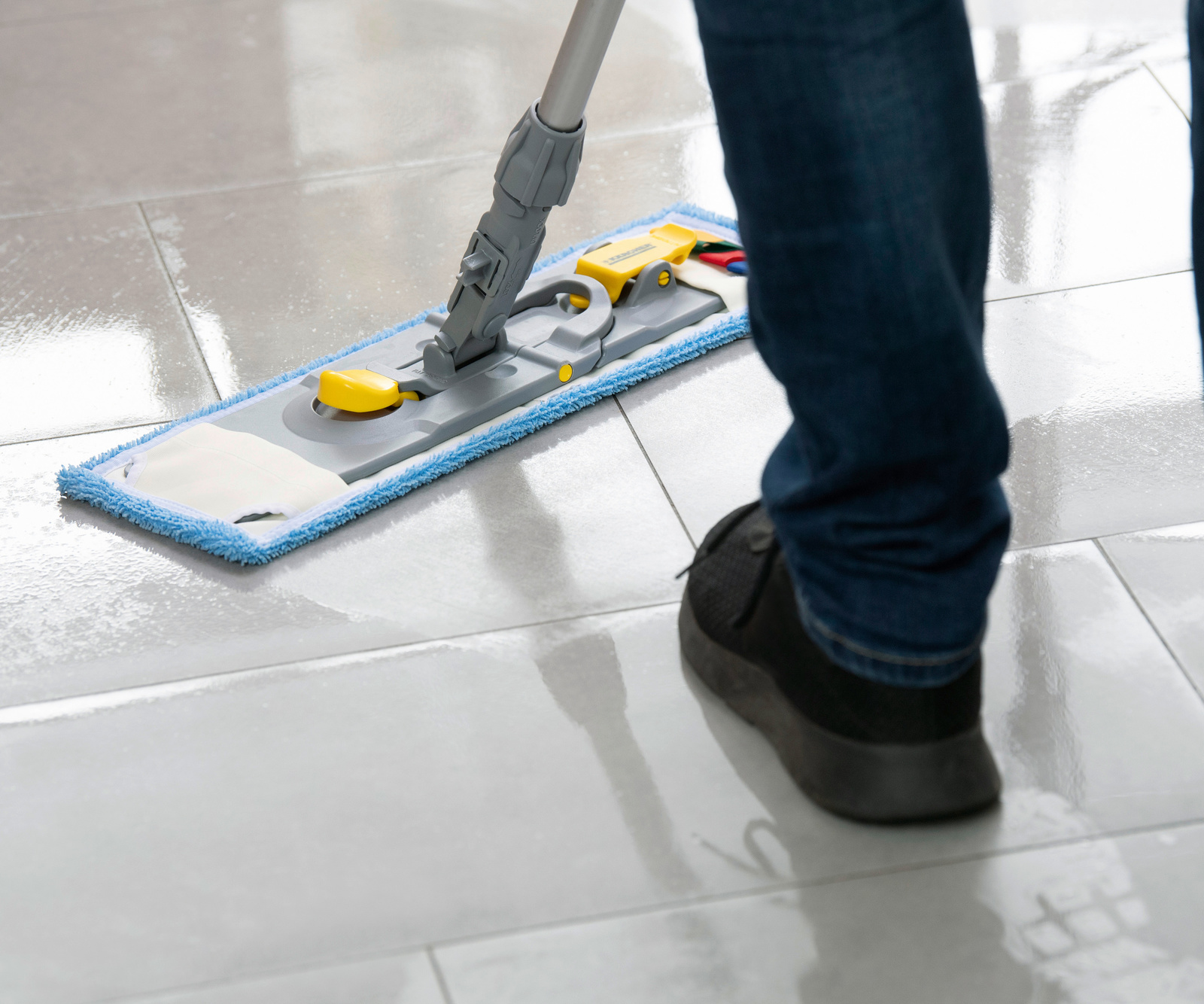
การกำจัดคราบตะกรันบนกระเบื้อง
ไม่ใช่เพียงแค่ในห้องน้ำเท่านั้นที่คราบตะกรันจะกลายเป็นปัญหา: คราบหินปูนสีขาวอาจเกิดขึ้นเมื่อเวลาผ่านไปหากน้ำที่ใช้ทำความสะอาดมีแคลเซียมสูง โดยคราบตะกรันนี้มักเกิดขึ้นบนกระเบื้องสีเข้ม และคุณมักจะสังเกตเห็นได้ในบริเวณที่มีการเดินบ่อยๆ โดยจะเริ่มมีลักษณะมันเงา
เพื่อกำจัดคราบตะกรันนี้ ให้ใช้ผลิตภัณฑ์ทำความสะอาดที่เป็นกรด หรือจะใช้วิธีการทำความสะอาดด้วยของใช้สามัญประจำบ้าน เช่น น้ำส้มสายชูหรือกรดซิตริกก็ได้ เมื่อใช้ผลิตภัณฑ์ทำความสะอาดที่เป็นกรดแล้ว ควรทำการราดน้ำบริเวณร่องของกระเบื้องเสมอ เพื่อป้องกันไม่ให้สารทำความสะอาดทำลายร่องกระเบื้องนี้ วิธีการคือล้างพื้นผิวด้วยน้ำสะอาดก่อน จากนั้นเจือจางผลิตภัณฑ์ทำความสะอาดกับน้ำตามคำแนะนำ และใช้แปรงขัด ในระยะเวลาประมาณห้านาที สามารถทำการขัดพื้นผิวเพิ่มเติมได้ แต่ไม่ควรให้สารทำความสะอาดแห้ง หลังจากนั้นให้ผ้าเช็ดทำความสะอาดหรือไม้ถูพื้นกับน้ำสะอาดเช็ดพื้นอีกครั้ง จนกว่าคราบสารทำความสะอาดทั้งหมดจะถูกขจัดออก โดยควรเปลี่ยนน้ำหลายครั้ง สำหรับคราบตะกรันที่บางมาก ในบางกรณีเพียงแค่เช็ดพื้นด้วยผลิตภัณฑ์ทำความสะอาดที่เป็นกรดหนึ่งหรือสองครั้งแล้วล้างด้วยน้ำสะอาดก็เพียงพอ
การทำความสะอาดอย่างถูกสุขลักษณะด้วยเครื่องทำความสะอาดแบบไอน้ำ
ทางเลือกที่ดีในการทำความสะอาดพื้น คือการใช้เครื่องทำความสะอาดแบบไอน้ำหรือเครื่องสตรีมไอน้ำ ซึ่งจะผลิตไอน้ำร้อนและทำงานได้อย่างถูกสุขลักษณะ ด้วยอุณหภูมิสูง ทำให้สามารถกำจัดแบคทีเรียและไวรัสได้ถึง 99.99% โดยไม่ต้องใช้สารทำความสะอาดทางเคมี อีกทั้งไอน้ำร้อนยังช่วยสลายคราบสิ่งสกปรกที่ฝังแน่นและขจัดคราบมัน ประโยชน์ของเครื่องทำความสะอาดแบบไอน้ำนั้นเด่นชัดโดยเฉพาะในห้องครัว โดยเครื่องทำความสะอาดแบบไอน้ำเหมาะสำหรับผู้ที่มีอาการภูมิแพ้และครอบครัวที่มีเด็กเล็ก ซึ่งไม่ควรสัมผัสกับสารทำความสะอาดที่รุนแรงบนพื้น เนื่องจากการผลิตไอน้ำจะทำให้มีการกำจัดแร่ธาตุในน้ำ ไอน้ำจึงไม่ทิ้งคราบตะกรันหรือคราบทำความสะอาดไว้ ด้วยความร้อนทำให้พื้นแห้งเร็วและสามารถเดินได้อีกครั้งในเวลาอันสั้น
การใช้ผ้าไมโครไฟเบอร์หรือหัวฉีดนั้นเหมาะสมสำหรับการทำความสะอาดกระเบื้อง ด้วยวิธีเดียวกับการเช็ดพื้น ผ้าไมโครไฟเบอร์ควรใช้กับกระเบื้องหินเนื้อดี เมื่อต้องการปล่อยไอน้ำ ให้เคลื่อนที่หัวฉีดหรือไปมาอย่างรวดเร็วในท่าทางที่ทับซ้อนกัน โดยปล่อยไอน้ำในปริมาณที่พอเหมาะสำหรับการคลายสิ่งสกปรก สิ่งสกปรกที่หลุดออกจะถูกผ้าดูดซับไว้ ดังนั้นควรเปลี่ยนผ้าคลุมที่สกปรกเป็นประจำ สำหรับการทำความสะอาดร่องกระเบื้อง ให้เคลื่อนที่หัวฉีดขึ้นและลงและไปข้างๆ (ในลักษณะเป็นรูปกากบาท) บนพื้นที่ที่ต้องการทำความสะอาด สำหรับการทำความสะอาดอย่างล้ำลึก ก็สามารถทำความสะอาดแยกได้ด้วยเช่นกัน
ในรอบการทำความสะอาดครั้งแรกด้วยเครื่องทำความสะอาดแบบไอน้ำ อาจมีรอยขีดข่วนเกิดขึ้น ซึ่งเกิดจากคราบสารทำความสะอาดและสามารถถูกขจัดออกได้ โดยการเช็ดด้วยเครื่องทำความสะอาดแบบไอน้ำหลายๆ ครั้ง
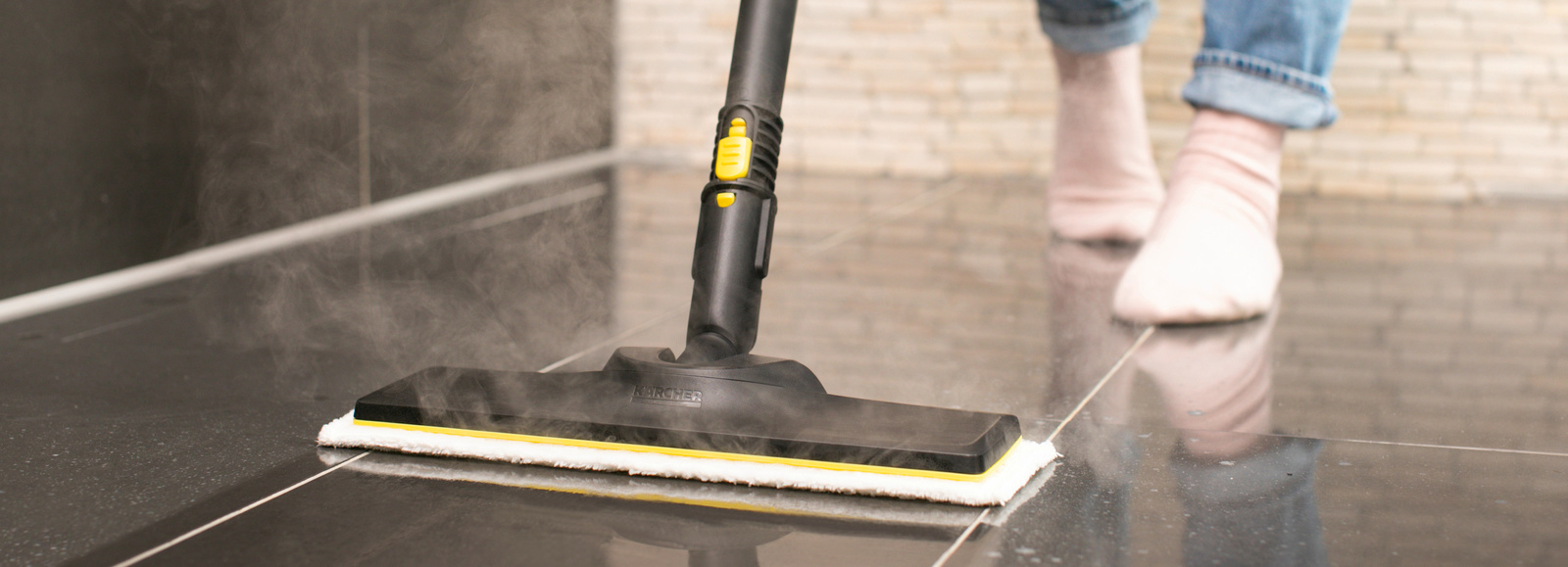
รวดเร็วและง่ายดาย: เครื่องทำความสะอาดพื้นไฟฟ้า
กระเบื้องพื้นสามารถทำความสะอาดได้อย่างรวดเร็วและทั่วถึงด้วยเครื่องทำความสะอาดพื้นไฟฟ้า ลูกกลิ้งทำความสะอาดของอุปกรณ์สามารถหมุนได้ที่ 500 รอบต่อนาที และสามารถขจัดสิ่งสกปรกที่ฝังแน่นได้อย่างง่ายดาย น้ำสกปรกจะถูกเก็บในถังแยก ทำให้คุณสามารถใช้น้ำสะอาดได้เสมอในขณะที่เช็ด พื้นที่ที่ใช้ FC 7 cordless ยังสามารถกำจัดสิ่งสกปรกเบื้องต้นได้ ทำให้ไม่จำเป็นต้องดูดฝุ่นก่อน ด้วยน้ำยาทำความสะอาดที่ออกแบบมาเฉพาะ RM 537 เหมาะสำหรับกระเบื้อง, หิน, และหินธรรมชาติ"








